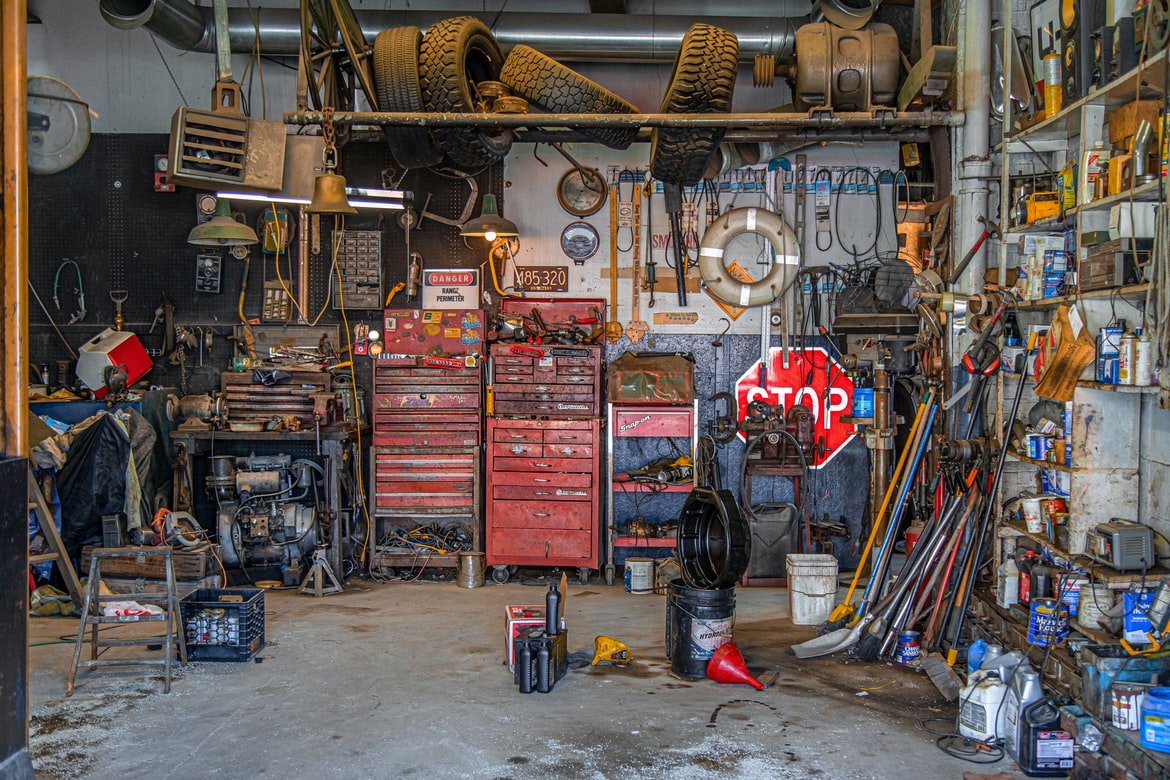
Concrete floors tend to go through a lot. Over time, oil and paint spills, regular footfall and the movement of pallets, forklifts and other vehicles can all take their toll on these surfaces, leaving them looking dull and worn.
If your concrete floor has seen better days, you may feel it’s time to repaint it. However, you should bear in mind that renovating a concrete floor is not as simple as painting over the years of wear and tear!
There is a process you should follow to restore your concrete floor’s long-lost looks and keep it looking great in the longer term. And, there’s no easy way around it – it all starts with giving the surface a good old-fashioned deep clean …
How to Clean Your Garage Floor
Due to their porous surfaces, concrete floors accumulate dirt and grime very easily. As such, it is important that you give yours a thorough clean before beginning the painting process.
You may find using a pressure washer or a floor buffing machine to be effective. Some pressure washers also incorporate a degreaser, which allows for a deeper clean. Once finished, leave time for the floor to dry.
Alternatively, you can use either a hose with a pressure nozzle, or a stiff-bristled scrubbing brush (attached to a broom handle). You may also wish to use a degreaser or detergent in conjunction with this, for a more thorough clean. Leave the solution to settle for several minutes, but do not allow it to dry before scrubbing!
Please also be aware, if there are remnants of paint or sealers in your floor, you should also use a chemical striper (such as caustic soda) to remove them before proceeding to the next step. Now, you should be ready to prime your concrete floor.
Why Should I Prime my Concrete Floor?
In the vast majority of cases, concrete should be primed prior to painting. However, you will definitely need to prime your floor if it has not yet been painted, is peeling or flaking, or you wish to use a type of paint that would not otherwise be compatible with a concrete surface.
What Type of Primer Should I Use?
There are several types of primer that are compatible with concrete, each with their own strengths. The optimal choice for your surface will depend on its use:
Polyurethane Primer: This solvent-based primer can be applied to all manner of surfaces, including concrete. This primer is an ideal choice for surfaces that are dusty after preparation.
Quick Dry Alkyd Primer: This type of primer is wear and tear resistant but also perfect for smooth floor surfaces or when you need a quicker drying sealer.
How to Apply Floor Primer
Before applying your floor primer, make sure that the surface is clean and free of flaking paint. You should be able to sufficiently prime your concrete floor with a single coat. Using a paintbrush or roller, thoroughly apply your floor primer.;
How Much Floor Paint Will I Need?
The amount of paint required to paint a floor will vary, depending on its surface and the desired finish. You can expect to use around 1 litre of paint to cover each 8 – 10 m² of floor space – and this figure should be multiplied by two, given that you will need to apply at least two coats of floor paint to achieve a durable surface and finish.
For a clearer indication, you should also refer to the manufacturer guidelines, as these will specify how many layers are needed to provide a long-lasting finish. If you do not apply a sufficient number of coats, you may have to contend with premature chipping and flaking.
So, always take the time to work out how many coats of paint you’ll need before getting started and the rest will follow!
How to Apply Floor Paint
Once your floor has been cleaned, primed and is completely dry, you’re ready to apply your floor paint. A Polyurethane floor paint is a great option for most concrete surfaces such as garage or warehouse floors. Take your time when painting to ensure an even coverage. You should apply multiple layers individually, rather than attempting to apply two or more thick layers all at once.
You should allow a full day’s drying time after applying each coat of paint to ensure that the paint sets properly.
Consider Using a Concrete Sealer
In order to ensure your concrete floor has an optimal level of protection from everyday contaminants, you should seriously think about sealing it after painting.
Applying a coat of Polyurethane Floor Sealer once your newly painted floor has dried, can help to provide additional resistance against mould and oil stains. You can apply your concrete sealer using a brush, roller or airless spray.
Thanks for Reading – Best of Luck with Your Project!
We hope you found our latest guide helpful and now have a clear plan for how to revitalise your concrete floor. Best of luck with your project – and we hope you achieve the desired results!
Don’t forget to check back soon for even more DIY, renovation and refurbishment insights for our team. See you next time.
